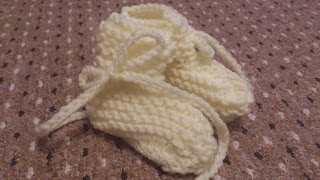Over the past few days, I've been going through my Mum's selection of wool and her collection of knitting pieces that she has knit herself. This is everything from dishcloths made from special cotton (especially for dishcloths) right up to jumpers that she has knit for herself.
I took a wide range of shots from very extreme close ups to medium shots; I didn't think it was necessary to do wide shots on wool and knitting projects. My favourite type of shots have definitely been the extreme close ups; I was shooting these on my camera phone so they won't be the same quality as a digital SLR, but I feel like I was able to capture the effect I was looking for. This effect was essentially looking at knitting projects and the wool; and being able to go very close to it to see every stitch, if the wool changed colour, if the stitch changed, and how it all came together to go from stitches on a needle to a completed project.
(An ombre scarf)
(A multi coloured cowl)
(Balls of wool still in their package)
(Dark ball of wool with a striking red through it)
(A hat that I myself, am currently knitting)
(A small number of knitting books)
(Three knitted pillows with all different wool and
stitches used)
(A coloured range of dishcloths)
(An extreme close up of these dishcloths)
(Showing the different stitching used in the dishcloths)
(A pair of socks)
(A small number of jumpers that my Mum has knit)
(An extreme close up of the amount of colours that she used
throughout one of the jumpers)
(A pair of baby booties)
(A range of baby jumpers)
While taking the photographs, I was very surprised at how much a project could bring out something so much more than just a few strands of wool. Depending on the type of stitch that was used, as well as the type of wool; if you just focus your eye very closely into any part of the project, it could almost be anything. While working on my own knitting projects and studying more about knitting, it has made me appreciate the time and the effort that goes into knitting things like these even more.

















